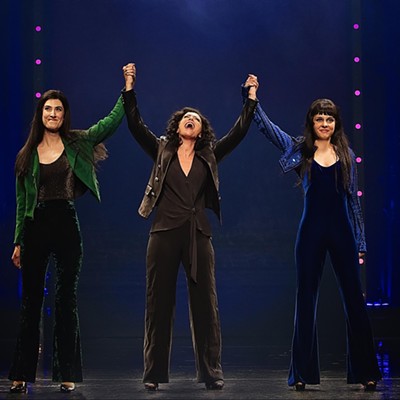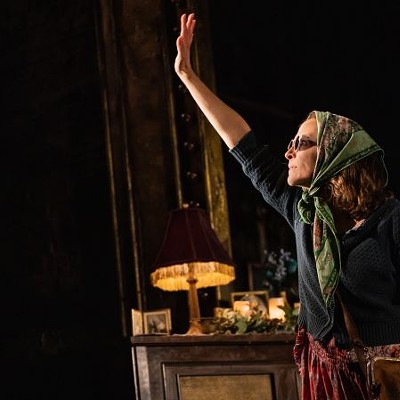Pinpointing Japanese art is tough. We tend to pigeonhole Japanese art into a select few categories: the woodblock/printmaking periods often depicted with landscapes and volcanoes, the architecture of pagodas and temples or the delicate calligraphy of the Buddhist influence. Contemporary Japanese art is frequently associated with anime, girls with big eyes and tiny waists or futuristic-style images and settings. But there have been significant contributions made to the pop art and avante-garde movements of the 1960s and 1970s by Japanese artists. One such artist is Ushio Shinohara, who, along with his wife, artist Noriko Shinohara, has received newfound recognition, as of late.
Shinohara and his wife are the subject of a new documentary, Cutie and the Boxer, which just screened this past week during The Houston Cinema Arts Festival. In tandem with the screening, the Zoya Tommy Contemporary Gallery held a pop up exhibition this weekend of Shinohara and his wife's work.
Shinohara came up in the '60s during the pop art movement, but found himself among the anti-establishment artists of the time. Along with his peers, many of which were Japanese artists, Shinohara fell into what is often described as the "Neo Dada" movement; the movement tended to emphasize the "importance of the work being produced, rather than on the concept of generating the work."
Shinohara found that the creation process was more significant to him than the end result, and his "boxing paintings" began.
Boxing painting is exactly what it sounds like; Shinohara dons a pair of boxing gloves covered in paint and goes to town on a piece of canvas. When he first began, much of the work was temporary; his paintings would wash away with the rain. The focus, then, was that it was the production, a dance, a performance if you will, rather than an end product. Eventually, Shinohara would make his pieces more permanent, even adding paint-covered sponges to the ends of his boxing gloves.
The Zoya Tommy's weekend-only pop up featured a host of the artist's boxing work. This unique concept wasn't taken very seriously for a good portion of the artist's career, even forcing him to move his efforts into other artistic pursuits but was eventually revived, quite recently. I tend to understand both sides of the spectrum. The pieces are comprised of large splatters of paint on canvas and there is not much more to them. Some are colorful splatters on more colorful backgrounds, but as far as depth and breadth go, that's about it.
But when you take a step aside and contemplate more the process, as this type of work wants you to do, the art becomes much more fascinating. Connotatively, we equate boxing with violence, and we don't tend to think about art in the same respect. But perhaps we should? Where does Shinohara's anger come from that he feels (felt) the need to knock his artwork square in the face? Does it come from a place of pain? And doesn't a lot of artwork come from those very places, deep within us? How different is this impression from that of the highly physical and intensely depressed work of Jackson Pollock?
Along with the boxing paintings, the pop up had several of Shinohara's sculptures on display, along with a few of his wife's work. The sculptures, which feel more stereotypical Japanese representations, come from a world all of their own, comprised of layers upon layers of plastic paint dripping over wire structures of temples and odd-looking creatures. Noriko Shinohara's work, too, is profoundly more Japanese influenced, ink on canvas, animals and cartoon-esque people.
Unfortunately, this exhibition was only up for the weekend, but keep an eye out for the documentary, which is sure to pop up on Netflix soon enough for a closer look into the lives of the artist and his wife.
The Zoya Tommy Gallery is located at 4411 Montrose Boulevard, Suite F. For more information visit zoyatommy.com.





